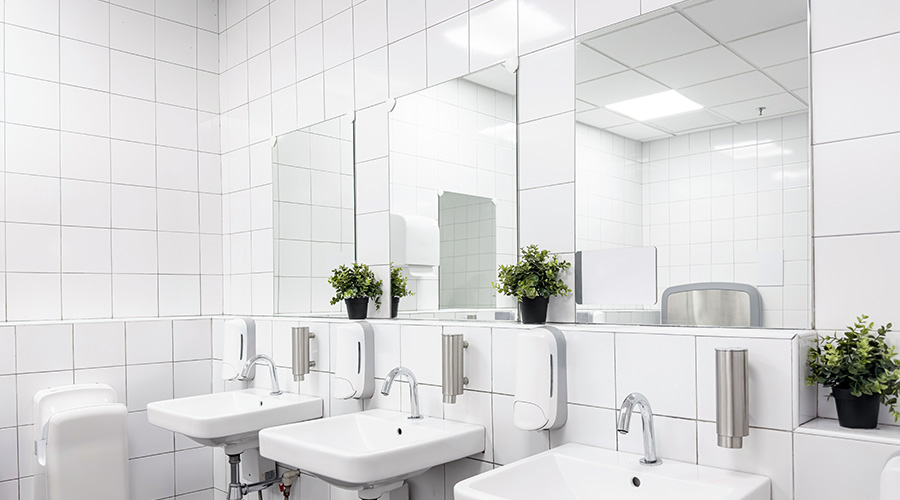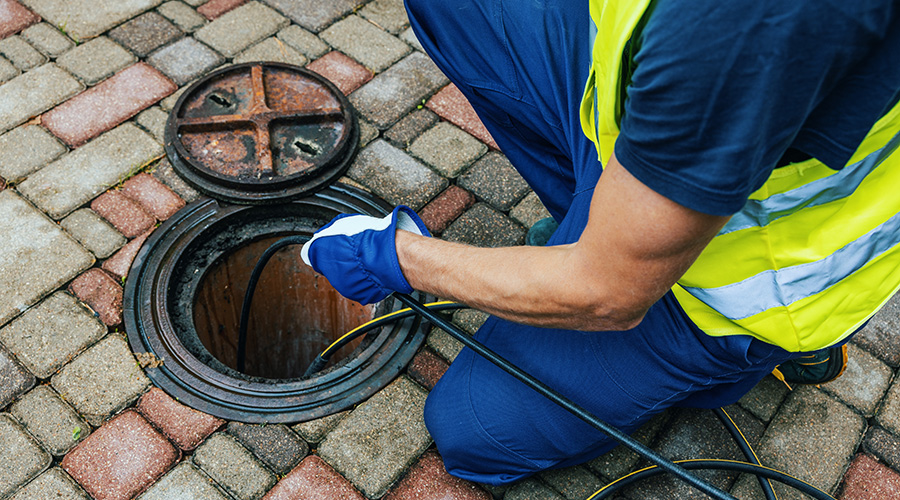From Water Flow to Cash Flow
How simple solutions can help facilities save both of these key resources
|

Baltimore, Maryland
March 15-17, 2005
|
|
The Details
|
|
Tuesday, March 15
|
|
Conferences:
|
9 a.m. - noon
|
|
Exhibits:
|
Noon - 4 p.m.
|
|
Opening night reception:
|
4 p.m.
|
|
Wednesday, March 16
|
|
Conferences:
|
9 - 11:30 a.m.,
3:40 - 4:40 p.m.
|
|
Exhibits:
|
11:30 a.m. - 3:30 p.m.
|
|
Birds of a Feather
Networking Sessions:
|
4:45 - 5:45 p.m.
|
|
Thursday, March 17
|
|
Conferences:
|
9 - 10 a.m.
1:10 - 2 p.m.
|
|
Exhibits:
|
10 a.m. - 1 p.m.
|
|
|
ONLINE REGISTRATION OPEN NOW
|
|
Click here for more information on
seminars,speakers and schedules, or call
(414) 228-7701, extension 343.
|
These days, it is not uncommon to hear of a facility undergoing an energy audit to track potential sources of wasted power or a security audit to determine a building’s vulnerabilities. But a water audit? Actually, it’s a good idea, says Amy Vickers, engineer, water-conservation expert and author of The Handbook of Water Use and Conservation (WaterPlow Press).
“The regulatory picture is shifting when it comes to water use,” Vickers says. “And LEED standards are becoming part of municipal building codes. It’s becoming critical to determine water’s end uses throughout a facility.”
Vickers is president of Amy Vickers & Associates Inc. in Amherst, Mass., and author of the water-efficiency requirements for plumbing fixtures adopted under the U.S. Energy Policy Act of 1992. She says it makes sense to emphasize the practical when implementing water-saving measures.
“Many large and some small facilities use single-pass cooling, which is cheap to install but expensive to operate,” she says. “Recirculating that water can save money.”
Facilities can find savings, both in costs and water use, by paying closer attention to leaks. Sensors and routine maintenance procedures can significantly reduce waste and property damage. Landscaping is another area in which organizations can save money by using native plants on the grounds and installing auto-irrigation systems that require no daily maintenance.
“Sears and UPS have transformed their landscapes, not necessarily because they’re environmentalists, but to save money,” she says.
Vickers adds that plumbing fixtures are prime targets for water conservation. From low-flow toilets to waterless urinals, technology is changing and improving water efficiency.
“New York City’s Battery Park recently went to composting toilets and gray-water use,” she says. “These are options that make sense not only for state parks but for new construction that takes the long-term view for cost savings.”
While most water-conservation measures are basic, communicating the need for them to upper management can be difficult. Vickers says it is critical to shift the management mindset from the short term to the long term.
“Technology is always changing and providing more opportunities for long-term savings,” says Vickers. “It behooves a facility professional to stay on top of this.”
 The Customer-Centered Facilities Management Organization The Customer-Centered Facilities Management Organization
Editor's note: What does facility management have to do with the launch of a new snack food? Quite a bit, according to Karla Brandau, president of People Skills International and a speaker at the upcoming National Facilities Management & Technology Conference taking place March 15-17 in Baltimore. Her presentation, “Solving Facility Management Challenges and Creating Positive Change with Creativity,” takes place on Thursday, March 17, at 1:10 p.m. Here, she discusses how facility management professionals can look to other industries for insights into improving customer service.
By Karla Brandau
Are your facility customers less than fully satisfied with the services provided by your organization? If so, consider how Hershey Foods conducts successful campaigns to better please their customers.
Hershey Foods took the familiar Almond Joy candy bar and morphed it into a new, innovative product: Pringles potato-chip-shaped Swoops. The Swoops scored big in customer satisfaction, and buying is on the upswing.
In light of this successful model, are you monitoring your customers “buying” habits or needs? Do your customers like what you provide? If your services were delivered differently, in the form of a Swoop, would your customers be more satisfied?
As you seek to better serve your customers and create a more customer-centered organization, try these steps:
-
Research the newest technology, such as system and equipment surveillance systems, or the supporting infrastructure needed for improved communications. Be familiar with costs and options to improve functionality and service levels so you can point out to your customer a cost-effective, fantastic upgrade.
-
Sponsor brainstorming and creativity sessions with your employees to discover new ways of pleasing the customer by finding answers to the challenges of maintaining indoor air quality or reducing momentary glitches in a power feed so digital equipment is not damaged.
-
Create a customer-centered culture that honors ideas and supports risk-taking. Reward workable suggestions in tangible ways such as tickets to the football game. Communicate incessantly with the customer.
-
Ensure everyone in your organization understands your customer-centered service vision.
As you motivate, make sure each employee knows:
-
what you do
-
who you do it for
-
what your customers want and why
-
how to improve customer satisfaction
-
what processes are needed to provide customer satisfaction.
As you carry out these four steps, your strategy for becoming a customer-centered organization will be clear. Your facilities services department will improve in responsiveness and your perceived service value will be high.
Karla Brandau is an expert in helping executives lead change and improve customer service in their organizations. She can be reached at (770) 923-0883 or online.
|
Related Topics:














